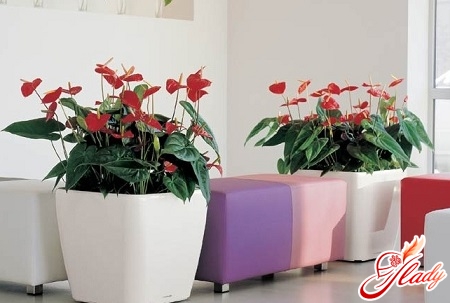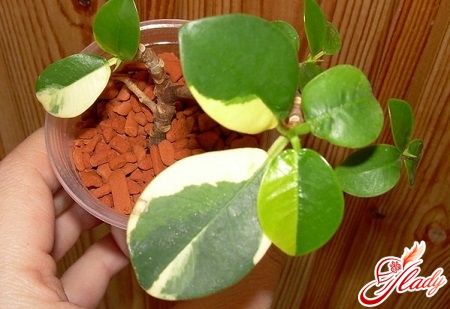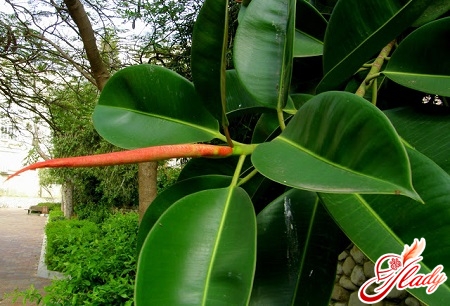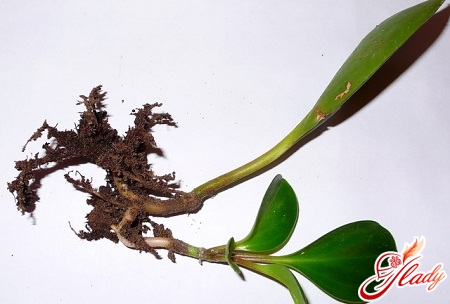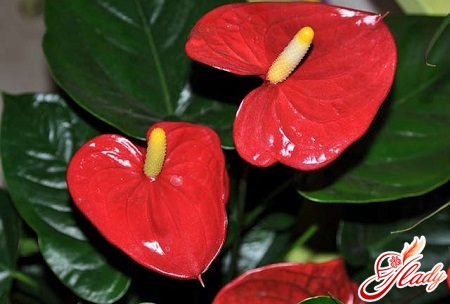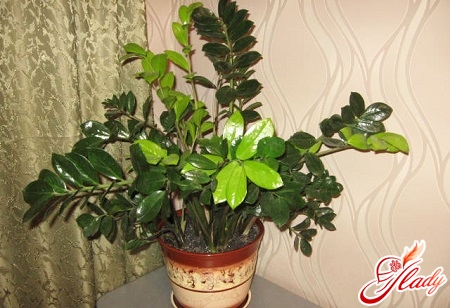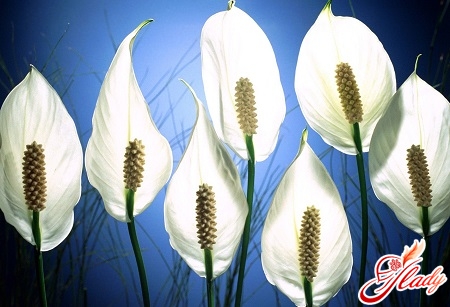 In nature, spathiphyllum grows in the SouthAmerica, Polynesia and East Asia. This evergreen perennial plant lives in marshy areas, along lakes, rivers and streams. People call spathiphyllum women's happiness. It is believed that this indoor flower brings its owner good luck and family peace. It is not recommended to give your personal spathiphyllum to someone, since you are giving your well-being into the hands of strangers. But a spathiphyllum flower, specially bought as a gift, will help any woman achieve what she wants most at the moment. For example, it will help an unmarried lady find her love, a childless woman - get pregnant and safely give birth to a healthy child. It is also noteworthy that with constant family scandals and lack of mutual understanding, spathiphyllum cannot develop normally - it dies, without having time to please its owner with spectacular flowering. Of course, only a calm environment in the house is not enough for the normal growth of the plant. Spathiphyllum, like any houseplant, requires some attention. And in this article we will tell you what kind of care the plant needs, how to transplant it correctly and what is the propagation of this indoor flower. But first, let's look at the types of spathiphyllum so that you can choose your flower.
In nature, spathiphyllum grows in the SouthAmerica, Polynesia and East Asia. This evergreen perennial plant lives in marshy areas, along lakes, rivers and streams. People call spathiphyllum women's happiness. It is believed that this indoor flower brings its owner good luck and family peace. It is not recommended to give your personal spathiphyllum to someone, since you are giving your well-being into the hands of strangers. But a spathiphyllum flower, specially bought as a gift, will help any woman achieve what she wants most at the moment. For example, it will help an unmarried lady find her love, a childless woman - get pregnant and safely give birth to a healthy child. It is also noteworthy that with constant family scandals and lack of mutual understanding, spathiphyllum cannot develop normally - it dies, without having time to please its owner with spectacular flowering. Of course, only a calm environment in the house is not enough for the normal growth of the plant. Spathiphyllum, like any houseplant, requires some attention. And in this article we will tell you what kind of care the plant needs, how to transplant it correctly and what is the propagation of this indoor flower. But first, let's look at the types of spathiphyllum so that you can choose your flower.
A variety of spathypylums
The species of this plant are varied. They differ in size, color of the spathe (this is the name of the spathiphyllum flower) and the spadix. All indoor varieties are hardy, bloom long and abundantly.
- Wallis's Spathiphyllum
Flower with a short rhizome.They reach 30-40 centimeters in height. The leaves of this variety are dark green, oblong, and have an elegant shape. The cover is white at the beginning of flowering and greenish at the end. The plant is shade-tolerant and does not require any special care;
- Abundantly blooming spathiphyllum
Medium size (50-60 centimeters), has oval-shaped leaves. Large flower stalks, buds form directly in the leaves, which ensures abundant flowering almost all year round;
- Spathiphyllum charming
Large plant, does not bloom as abundantly as the twothe above-described species. The cover of this variety of spathiphyllum has a greenish-white hue and resembles a flag. Flowering lasts from April to June;
- Spathiphyllum spoon-like
A large indoor flower that grows to onemeters in height. The leaves of this variety are oblong, the texture is glossy, and the edges are wavy. The coverlet is white and spoon-shaped;
- Spathiphyllum cannon
Also a large plant, the leaves of which look likecanna leaves. The spadix is yellow, the cover is white-green, with a sharp aroma. Indoor spathiphyllum has another name - white sail. It appeared due to the shape of its inflorescences. Cut flowers of any variety of spathiphyllum can retain their freshness for about a month, so they are often used by florists to create holiday bouquets.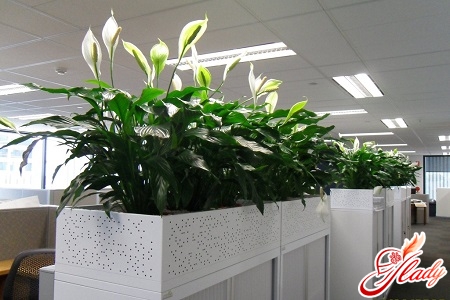
Features of care
All species of this plant are not tooare capricious, so caring for them will not cause you any particular problems. Spathiphyllum loves shaded places - bright sunlight is contraindicated for it. However, this does not mean that the flower should be kept in the dark all the time. If you notice that the plant's leaves have stretched out and acquired a dark color, it does not have enough light. Pamper your spathiphyllum with sunbathing or organize artificial light using fluorescent lamps. By the way, with artificial light, the flower grows faster and throws out buds more often. Cold air and drafts are destructive for this tropical beauty. Therefore, in winter, pay attention to organizing the right temperature in the room. 23-25 degrees Celsius - these are the optimal conditions for growing spathiphyllum. Top dressing is applied during the growth and flowering period, once a week. Before using fertilizer, carefully read the instructions and follow them strictly. If the plant's leaves have drooped and wilted, it lacks moisture. Remember, the root system of the flower should always be moist. Therefore, you need to water the spathiphyllum abundantly - as the top soil layer dries out. Once a week, arrange water procedures for the flower in the form of a shower. Wipe the leaves with a clean napkin to prevent dust accumulation. If there is water left in the tray after water procedures, do not rush to drain it, leave it for several hours. The plant needs a humid environment both in winter and in summer. Therefore, with the onset of cold weather, you should not radically change its contents.
Reproduction and transplantation
Spathiphyllum propagation occurs eitherby dividing the bush (during transplantation) or by apical cuttings. Before starting propagation (dividing the adult plant), carefully untangle the roots, trying not to damage them. Then plant the spathiphyllum in new smaller pots. To root the cuttings, you need to create a greenhouse effect for them. After planting the shoot in the ground, cover it with a glass container. When the spathiphyllum produces young leaves, you can safely remove the greenhouse. Water only the tray during rooting. Caring for a young plant is no different from caring for an adult flower. In order to transplant the spathiphyllum, you need to prepare the soil. Mix humus, leaf and turf soil, peat and sand in equal parts. To ensure that the substrate has the necessary air permeability, add small brick chips and pieces of charcoal to it. Before replanting the spathiphyllum, place drainage on the bottom of the pot, for which you can use expanded clay. Spathiphyllum needs to be replanted every year with the onset of spring. The size of the pot is selected based on the size of the plant itself. You should not take too large a container - this will slow down the growth of the flower in the future. After the transplant is done, put the spathiphyllum in a warm place and spray it daily. Until the plant takes root, do not water it too much. Rooting lasts about a week, so during this time, reduce watering by half. Fertilizing at this time is also not needed. When the spathiphyllum takes root, care returns to the previous mode.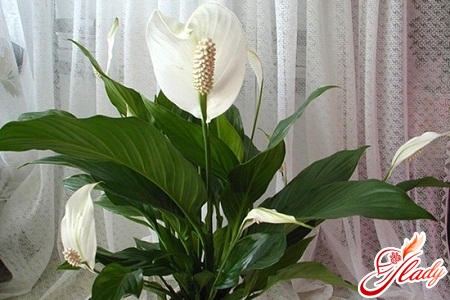
What difficulties can arise when growing spathiphyllum?
Spathiphyllum is considered an unpretentious plant.However, it is not immune to some problems. Let's consider what troubles owners of this plant can expect when growing it, and what care it needs to recover.
- The tips of the leaves turn yellow and dry.
This problem occurs due to insufficientair humidity. In city apartments, this is inevitable, even with frequent spraying. It is easy to increase humidity: pour pebbles (or other stones) into a small tray, moisten it, and place the spathiphyllum on top. This method is good for keeping the flower in winter. After all, it is in winter that the air in the room is overdried due to heating devices;
- Brown spots on the leaves
Excessive soil moisture orstagnation of water in the tray. Dry the spathiphyllum well (do not water it for 3-4 days). Do not stop spraying the leaves. Then fluff the soil in the pot, and the next day water the plant generously;
- The edges of the leaves turn black
This indicates a lack of minerals insoil – you need to feed the spathiphyllum. Use nitrogen-containing and phosphorus-containing fertilizers. You need to start feeding as soon as possible, otherwise the leaves will turn completely black and fall off.
- Pests
Spathiphyllum is susceptible to attack by thrips, mealybugsscale insects and spider mites. If the insects have not yet completely affected the plant, a regular soap solution will help, which must be used to wash the leaves. In advanced cases, special chemicals sold in flower shops are used. Sometimes an unplanned plant transplant is required. So we learned everything about spathiphyllum, the flowering of which will not leave anyone indifferent. Love the plant and, if possible, provide it with the necessary care. The flower will do the rest itself - it will bring real feminine happiness to your home!




